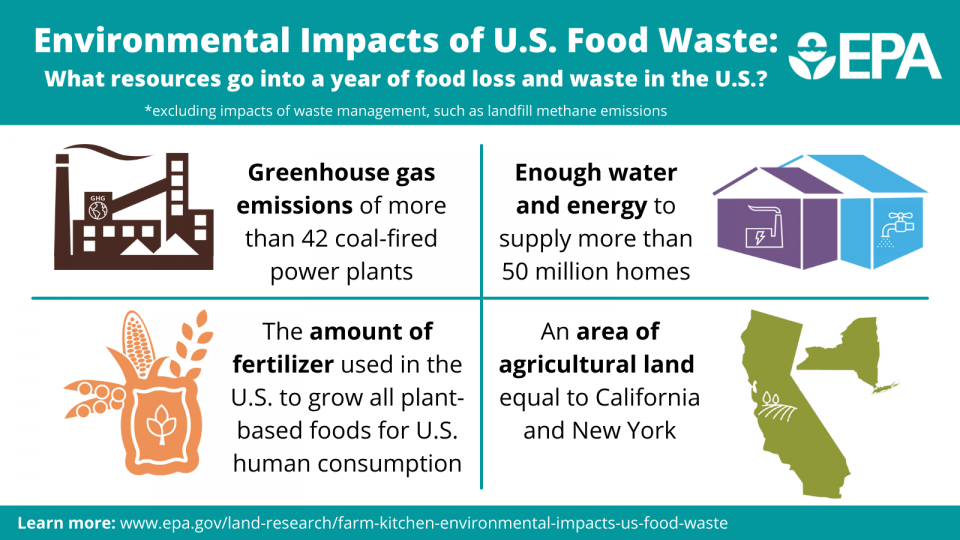Over one-third of the food produced in the United States is never eaten, wasting the resources used to produce it and creating a myriad of environmental impacts. Food waste is the single most common material landfilled and incinerated in the U.S., comprising 24 and 22 percent of landfilled and combusted municipal solid waste, respectively. Reducing and preventing food waste can increase food security, foster productivity and economic efficiency, promote resource and energy conservation, and address climate change.

EPA prepared the report, From Farm to Kitchen: The Environmental Impacts of U.S. Food Waste, to inform domestic policymakers, researchers, and the public about the environmental footprint of food loss and waste in the U.S. and the environmental benefits that can be achieved by reducing U.S. food loss and waste. It focuses primarily on five inputs to the U.S. cradle-to-consumer food supply chain — agricultural land use, water use, application of pesticides and fertilizers, and energy use — plus one environmental impact — green house gas emissions.
This report provides estimates of the environmental footprint of current levels of food loss and waste to assist stakeholders in clearly communicating the significance; decision-making among competing environmental priorities; and designing tailored reduction strategies that maximize environmental benefits. The report also identifies key knowledge gaps where new research could improve our understanding of U.S. food loss and waste and help shape successful strategies to reduce its environmental impact.
From Farm to Kitchen: The Environmental Impacts of U.S. Food Waste (pdf)




